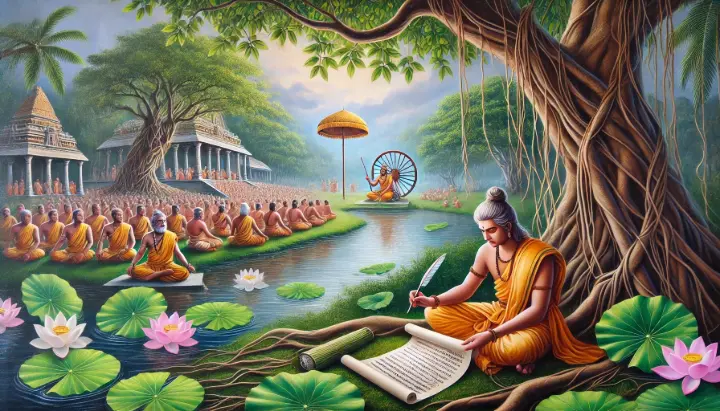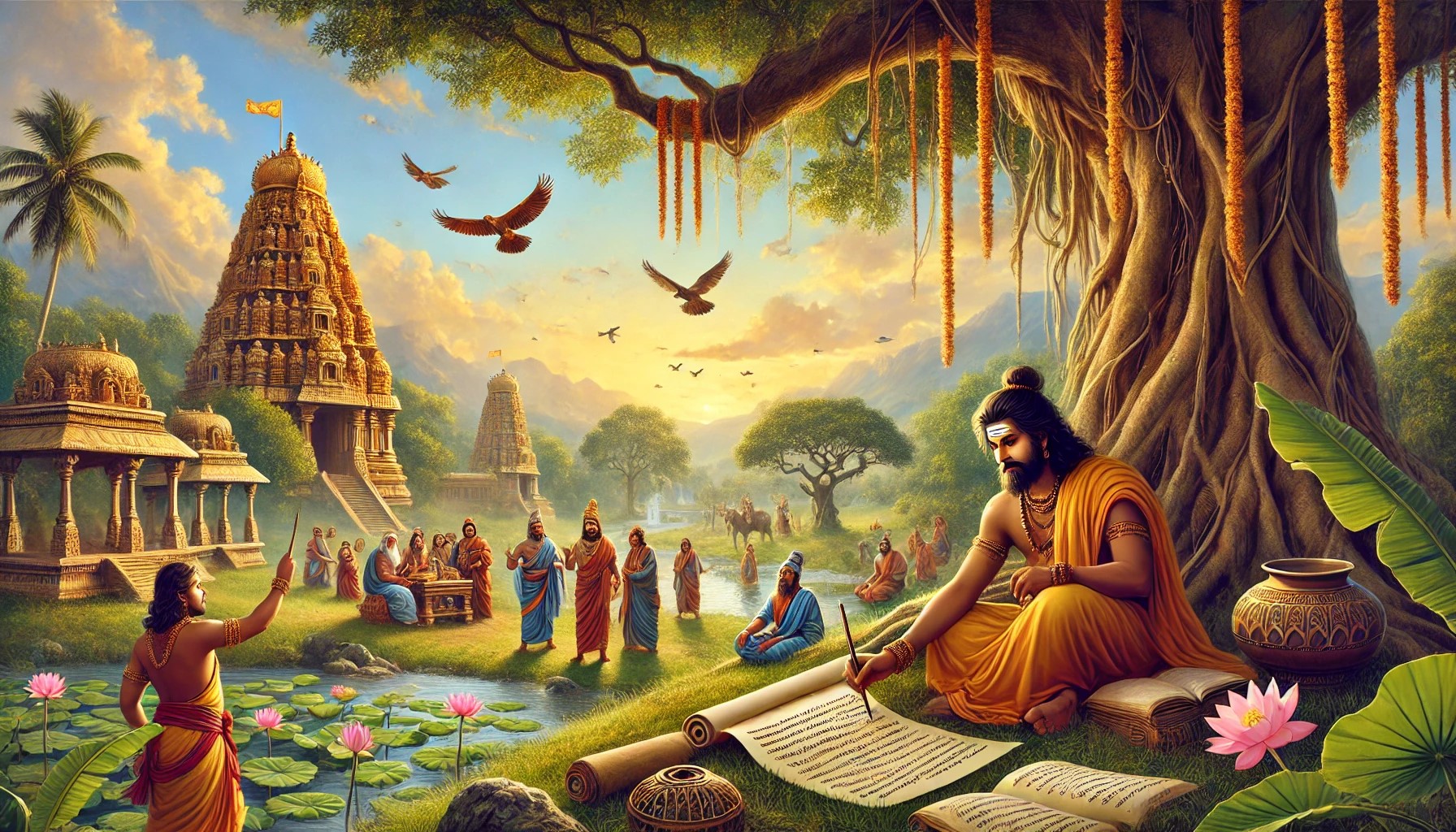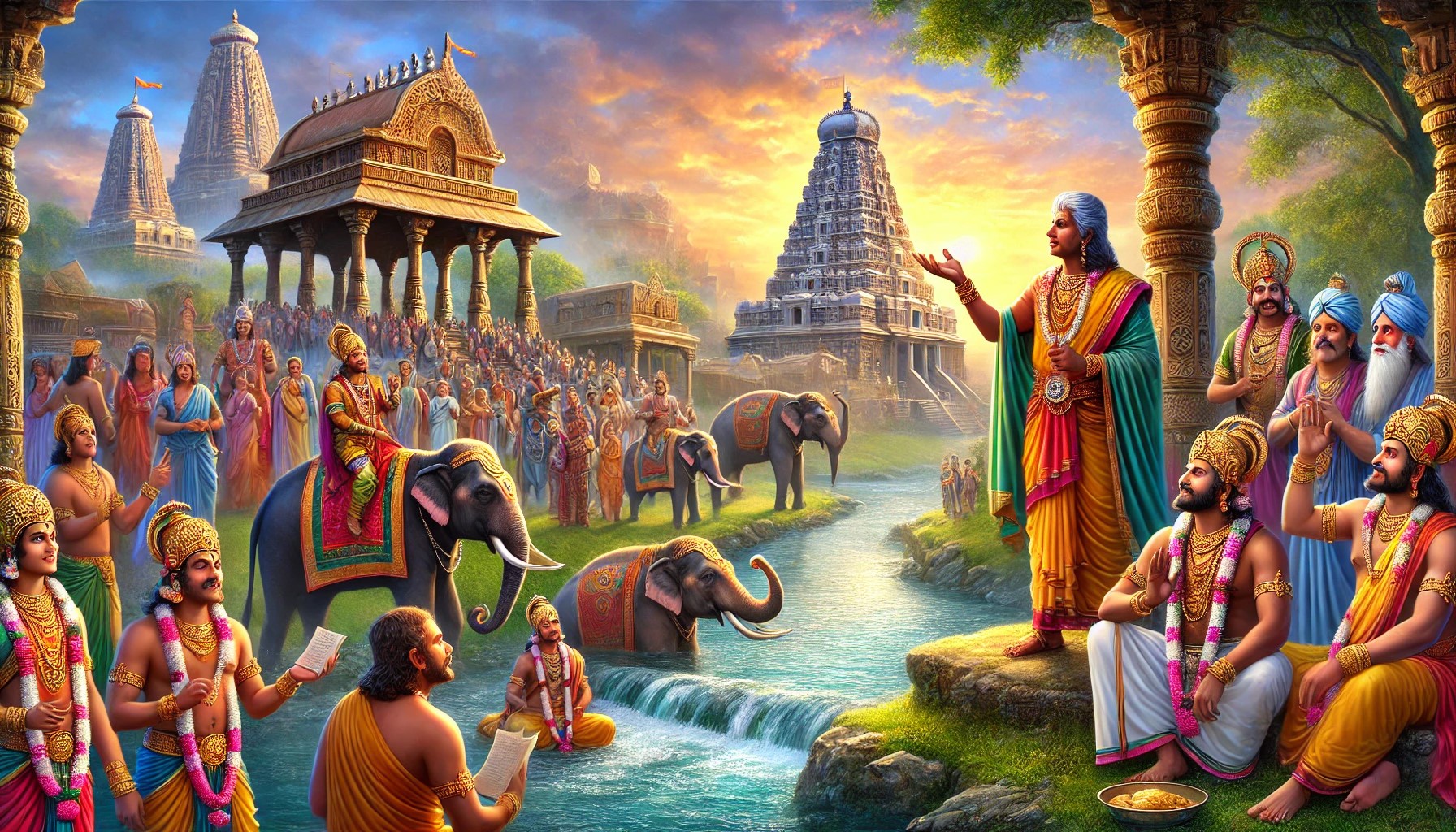Sangam Literature: A Window Into Ancient Tamil Life
Introduction: The Poetry of a Lost World
Imagine walking through the bustling streets of Madurai 2,000 years ago. Poets gather under the shade of banyan trees, composing verses about love, war, and the beauty of nature. Kings and merchants listen intently, rewarding the best poets with gold and land. This was the world of Sangam literature—the oldest surviving collection of Tamil poetry and a priceless record of ancient South Indian life.

For history lovers and UPSC aspirants, Sangam literature is more than just poems—it’s a time capsule that reveals how people lived, loved, and ruled between 300 BCE and 300 CE. The word "Sangam" means an assembly, and these poems were created in great literary gatherings (academies) supported by the Pandya kings.
What Exactly is Sangam Literature?
Sangam literature is a treasure chest of 2,381 poems written by 473 poets, including women poets like Auvaiyar. These works are divided into two main collections:
- Ettuthogai (The Eight Anthologies) – A mix of love songs and heroic tales.
- Pattupattu (The Ten Idylls) – Longer poems describing kings, gods, and landscapes.
There’s also the Tolkappiyam, the world’s oldest Tamil grammar book, which teaches us how these poems were structured.
When Was Sangam Literature Written?
Historians believe these poems were composed between 300 BCE and 300 CE, a time when Tamil kings like the Cheras, Cholas, and Pandyas ruled South India. Some legends say there were three Sangams, but only the works of the third Sangam have survived.

The Language of Sangam Poetry
The poems were written in Old Tamil, which sounds very different from modern Tamil. The language is rich with nature metaphors—comparing lovers to flowers, warriors to tigers, and kings to the sun.
The Great Works of Sangam Literature
1. Ettuthogai – The Eight Anthologies
These are like ancient Tamil playlists, filled with short, emotional poems:
- Ainkurunuru – 500 tiny love poems (each just 3-6 lines!).
- Purananuru – Songs praising kings and brave warriors.
- Kalithogai – Romantic poems comparing love to monsoon rains.
2. Pattupattu – The Ten Idylls
These are longer story-poems, almost like ancient movies:
- Tirumurukarruppadai – A devotional hymn to Lord Murugan.
- Maduraikanchi – A poetic tour of Madurai’s markets and temples.
- Pattinappalai – A lively description of the Chola port city, Kaveripattinam.
3. Tolkappiyam – The Rulebook of Tamil Poetry
This ancient grammar guide explains how poems should be written. It divides Tamil lands into five types (Thinais), linking each to emotions:
- Kurinji (Mountains) – Secret love meetings.
- Mullai (Forests) – Patient waiting for a lover.
- Marutham (Farmlands) – Lovers’ quarrels.
- Neithal (Seashore) – Loneliness and separation.
- Palai (Desert) – Heroism and danger.

Life in the Sangam Age: What the Poems Tell Us
1. Kings and Warriors
The Chera, Chola, and Pandya kings ruled different parts of Tamil land. Poems like Purananuru describe their bravery in battle and their love for poetry.
2. Trade and Wealth
South India was rich and connected to the world:
- Muziris port (Kerala) traded with Rome—ships brought gold and wine!
- Markets sold spices, pearls, and silk (Pattinappalai describes this well).
3. Society: From Hunters to Farmers
People lived differently based on their land:
- Hills (Kurinji): Hunters and gatherers.
- Forests (Mullai): Shepherds and cowherds.
- Farmlands (Marutham): Farmers growing rice.
- Coasts (Neithal): Fishermen and salt traders.

4. Gods and Beliefs
People worshipped:
- Murugan (the warrior god of hills).
- Korravai (the fierce goddess of war).
- Jainism and Buddhism were also growing.
Why Sangam Literature Matters for UPSC & History Lovers
If you’re preparing for UPSC or any exam, Sangam literature helps you understand:
✔ Early Tamil kingdoms (Chera, Chola, Pandya).
✔ Ancient trade routes (India’s links with Rome).
✔ Social structures (how people lived in different landscapes).
Questions on Sangam literature often appear in exams, especially about:
- Major books (Ettuthogai, Pattupattu, Tolkappiyam).
- The five Thinais (geographical divisions).
Sangam Literature in Different Languages
- In Hindi: संगम साहित्य तमिल कविता का सबसे पुराना संग्रह है, जो 2000 साल पहले लिखा गया।
- In Malayalam: സംഘം സാഹിത്യം പ്രാചീന തമിഴ് കവിതകളുടെ ഒരു സമ്പത്താണ്.
Conclusion: Why We Should Read Sangam Poems Today
Sangam literature isn’t just old poetry—it’s the voice of an ancient civilization. When we read these poems, we hear:
🌿 Farmers singing as they plant rice.
⚔️ Warriors boasting of their victories.
💞 Lovers whispering under mango trees.
For students, historians, and anyone who loves stories, Sangam literature is a bridge to the past—one that still feels alive today.
Quick Facts for Exams
📜 Period: 300 BCE – 300 CE
📚 Major Books: Ettuthogai, Pattupattu, Tolkappiyam
🗺️ Thinais: 5 landscapes (Kurinji, Mullai, Marutham, Neithal, Palai)
👑 Dynasties: Chera, Chola, Pandya